In today’s booming era of live-stream e-commerce and online shopping, jadeite bracelets attract vast numbers of consumers with labels like “natural jade” and “collectible value appreciation.” However, issues like false advertising, substandard products passed off as genuine, and post-sale disputes frequently occur. Many consumers, lured by low prices or trusting sales pitches, ultimately find themselves in situations where “the actual item differs drastically from the pictures” or “it’s identified as counterfeit.” This article exposes common pitfalls in online jadeite bracelet purchases through real-life cases and industry data, while offering practical strategies to avoid them.
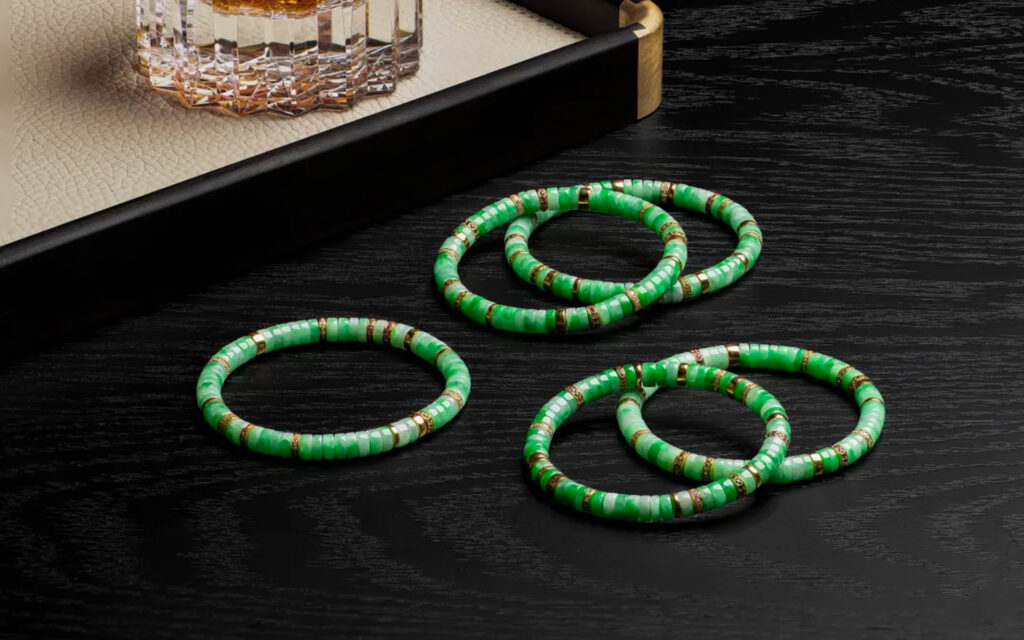
I. False Advertising Traps: Beware of “Wordplay” and “Fake Certificates”
1. Misleading Vague Language
Some sellers use ambiguous terms like “Burmese jadeite” or “natural A-grade” to obscure the truth. For example, items labeled “guaranteed natural jadeite” may actually be Guatemalan jadeite (priced at only one-third of Burmese jadeite); products claiming “re-inspection support” without explicitly stating “natural Burmese jadeite A-grade” are likely chemically treated B-grade or C-grade jadeite.
Avoidance Tip: Directly ask the seller, “Is this natural Burmese jadeite A-grade?” If they evade or give vague answers, terminate the transaction immediately.
2. Forged Appraisal Certificates
Even when certificates are provided, issues like missing steel stamps, unreadable QR codes, or mismatched photos and actual items may exist. For example, a consumer paid ¥8,000 for an “ice-type jadeite bracelet,” only to discover upon delivery that the certificate was counterfeit. The actual item was dyed quartzite jade worth less than ¥200.
Avoidance Tip: Prioritize certificates issued by authoritative institutions like NGTC (National Gemstone Testing Center) or GIC (Geological University of China Jewelry Testing Center). Verify authenticity through official websites or phone verification.
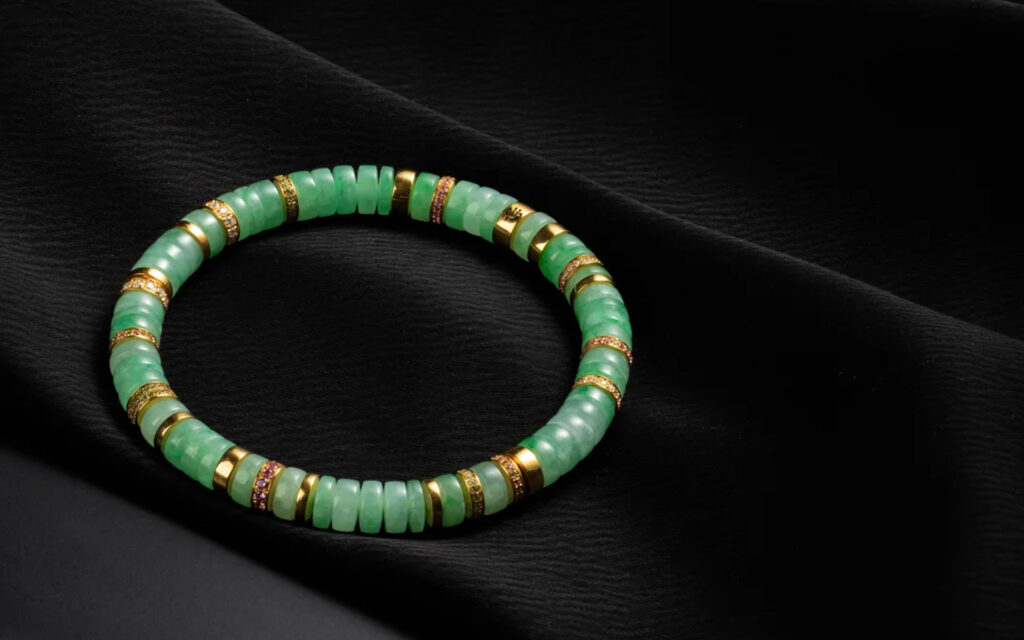
II. Visual Enhancement Traps: High-Intensity Lighting Filters and “Raw Material Gambling Schemes”
1. High-Intensity Lighting Filters in Live Streams
Sellers use multiple spotlights to illuminate jadeite, making its color appear more vivid and its translucency more pronounced. For instance, a “Imperial Green Bracelet” displayed in a live stream under intense lighting showed a rich green hue, but consumers later discovered the actual color was dull upon receipt, significantly reducing its value.
Avoidance Tip: Request multi-angle videos under natural light and save screenshots as evidence. Proceed with caution if sellers refuse.
2. Rough Jade Polishing Scams
Sellers promote “custom rough jade” by showcasing unpolished raw materials, claiming “value doubles after polishing.” However, polishing may expose flaws like cracks or inclusions, and sellers often refuse returns citing “custom items are non-returnable/non-exchangeable.”
Avoidance Tip: Steer clear of rough stones or custom orders; prioritize finished, in-stock items. If purchasing is unavoidable, insist the contract explicitly states “returns permitted if major flaws appear after polishing.”
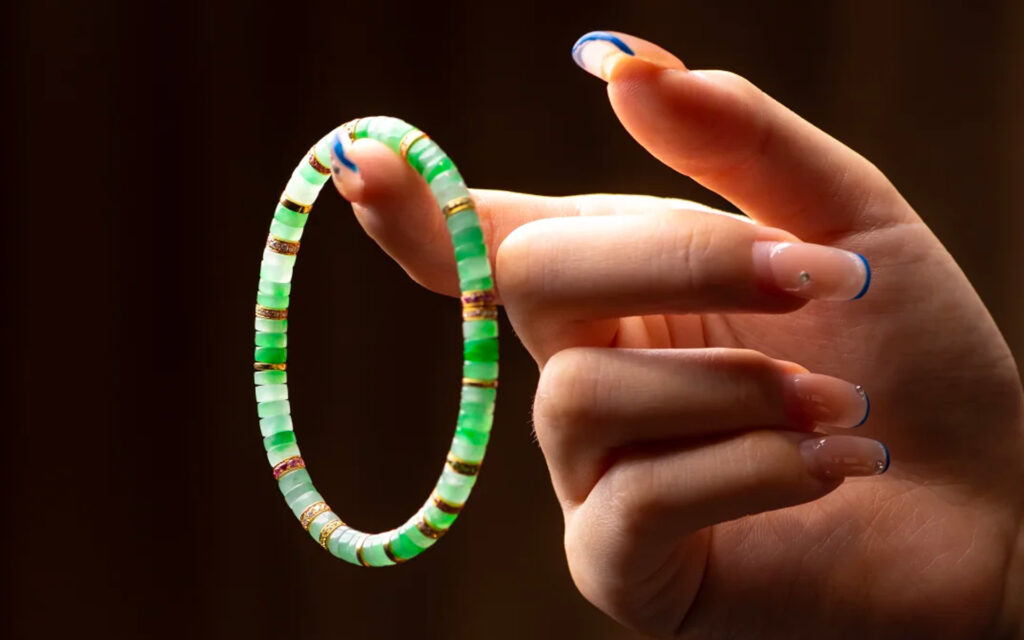
III. Price Traps: Low-Price Lures and “Price-Hike Discounts”
1. False Low-Price Bait
Some merchants use “clearance sales” or “factory direct” claims to slash jadeite bracelets priced at tens of thousands to mere hundreds of dollars. For instance, one consumer paid ¥500 for an “ice-quality jadeite bracelet,” later identified as acid-washed and resin-filled B-grade jade—potentially harmful to health with prolonged wear.
Avoidance Tip: Remember “you get what you pay for.” Genuine A-grade jadeite prices depend on quality, color, and craftsmanship. Exercise extreme caution with low-priced items.
2. Inflated Prices with Fake Discounts
Sellers first hike prices before advertising “30% off” to lure buyers. For instance, a bracelet marked up to ¥30,000 is “discounted” to ¥9,000, though its actual market value is only ¥5,000.
Avoidance Tip: Verify comparable prices via third-party platforms (e.g., Xianyu, jewelry forums) to avoid being misled by “discounts.”
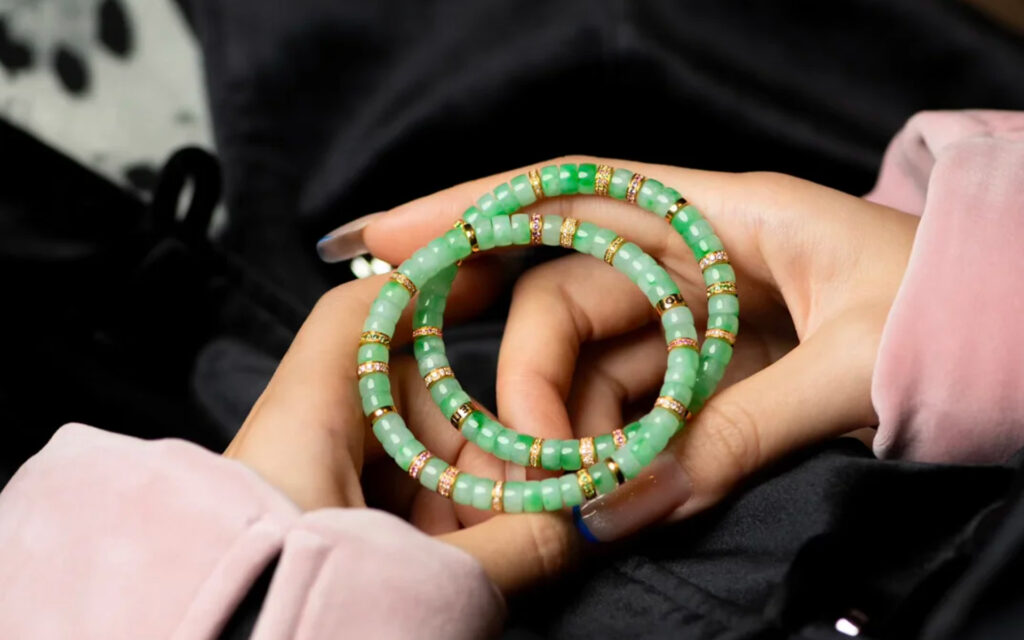
IV. After-Sales Traps: Difficult Returns & Rights Protection Challenges
1. Vague Return Policies
Some sellers list “7-day no-questions-asked returns” on product pages but impose strict conditions like “unpolished items,” “intact certificates,” or “unopened packaging.” For instance, one consumer discovered a jade bracelet didn’t fit and requested a return, only to be denied by the seller on the grounds that it had been “worn.”
Avoidance Tip: Carefully review return policies before purchasing. Prioritize shops offering “7-day no-questions-asked returns” with shipping costs covered by the seller.
2. Lack of Evidence for Rights Protection
Consumers often struggle to defend their rights due to failing to save chat records, livestream recordings, or appraisal certificates. For instance, one consumer who bought counterfeit goods received only a partial refund because they couldn’t provide proof of purchase.
Avoid pitfalls by: Saving all transaction records, communication screenshots, appraisal certificates, and shipping information. If disputes arise, file complaints with the platform or contact local consumer associations and market regulators.
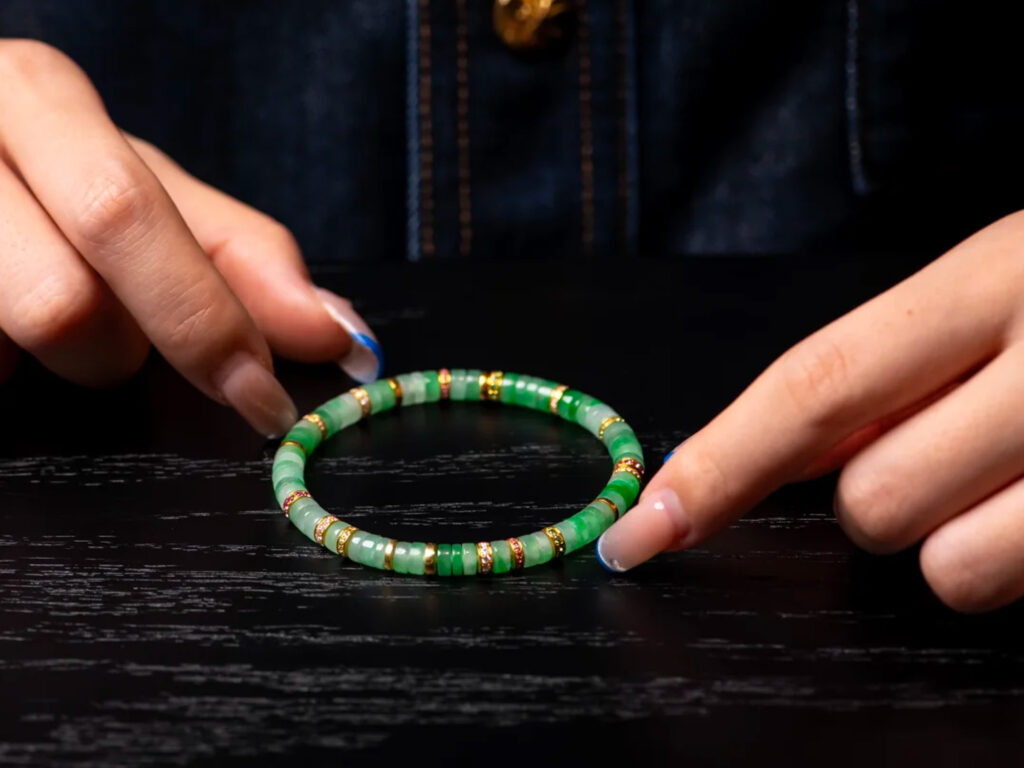
V. Practical Tips to Avoid Pitfalls: A Comprehensive Guide from Selection to After-Sales Service
1. Platform Selection: Prioritize Official Channels
Choose official flagship stores on reputable e-commerce platforms like Tmall and JD.com, or shops displaying “Brand Authorized” and “Triple Compensation for Counterfeits” labels. Avoid transactions through unofficial channels such as WeChat private chats or livestream links.
2. Physical Inspection: Details Determine Quality
Color: Natural jadeite exhibits vibrant hues, while dyed jadeite appears dull and uneven.
Luster: Genuine jadeite (Type A) displays a glass-like sheen, whereas treated jadeite (Types B and C) has a dull finish.
Flaws: Use a magnifying glass to check for cracks or acid-etched mesh patterns (a characteristic of Type B jadeite).
3. Payment Security: Reject Private Transfers
Use platform-official payment methods (e.g., Alipay, WeChat Pay) and avoid direct transfers to personal accounts. If a seller requests “cash on delivery,” verify the package contents match the description before signing for it.
4. Care and Wear: Extend Your Bracelet’s Lifespan
Avoid collisions with hard objects to prevent jadeite fractures.
Keep away from chemicals (e.g., perfume, dish soap) to prevent corrosion.
Regularly polish with a soft cloth to maintain luster.
Conclusion: Consume Rationally, Protect Your Rights
When purchasing jadeite bracelets online, abandon the “bargain-hunting” mentality and prioritize quality and value. By choosing reputable platforms, verifying certificates, preserving evidence, and asserting your rights rationally, consumers can significantly reduce the risk of falling into traps. Remember: Every act of consumer trust deserves respect, and every request for rights protection should be heard.